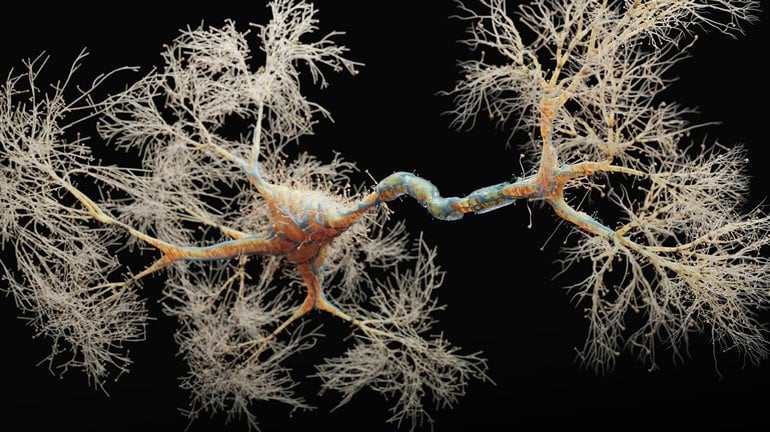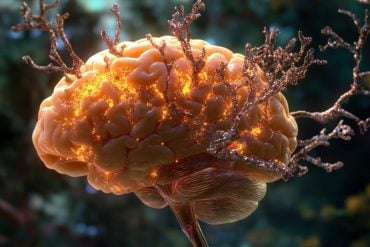Summary: Transposable elements team up with evolutionary recent neurons to influence differentiation and physiological function of neurons in brain development.
Source: EPFL
The human genome contains over 4.5 million sequences of DNA called “transposable elements”, these virus-like entities that “jump” around and help regulate gene expression. They do this by binding transcription factors, which are proteins that regulate the rate of transcription of DNA to RNA, influencing gene expression in a broad range of biological events.
Now, an international team of scientists led by Didier Trono at EPFL has discovered that transposable elements play a significant role in influencing the development of the human brain. The study is published in Science Advances.
The scientists found that transposable elements regulate the brain’s development by partnering up with two specialized proteins from the family of proteins known as “Krüppel-associated box-containing zinc finger proteins, or KZFPs. In 2019, another study led by Trono showed that KZFPs tamed the regulatory activity of transposable elements in the first few days of the fetus’s life. However, they suspected that these regulatory sequences were subsequently re-ignited to orchestrate the development and function of adult organs.

The researchers identified two KZFPs as specific only to primates, and found that they are expressed in specific regions of the human developing and adult brain. They further observed that these proteins kept controlling the activity of transposable elements – at least in neurons and brain organoids cultured in the lab. As a result, these two KZFPs influenced the differentiation and neurotransmission profile of neurons, as well as guarded these cells against inflammatory responses that were otherwise triggered if their target transposable elements were left to be expressed.
“These results reveal how two proteins that appeared only recently in evolution have contributed to shape the human brain by facilitating the co-option of transposable elements, these virus-like entities that have been remodeling our ancestral genome since the dawn of times,” says Didier Trono. “Our findings also suggest possible pathogenic mechanisms for diseases such as amyotrophic lateral sclerosis or other neurodegenerative or neurodevelopmental disorders, providing leads for the prevention or treatment of these problems.”
About this genetics research article
Source:
EPFL
Contacts:
Nik Papageorgiou – EPFL
Image Source:
The image is credited to EPFL.
Original Research: Closed access
“Primate-restricted KRAB zinc finger proteins and target retrotransposons control gene expression in human neurons” by Priscilla Turelli, Christopher Playfoot, Dephine Grun, Charlène Raclot, Julien Pontis, Alexandre Coudray, Christian Thorball, Julien Duc, Eugenia V. Pankevich, Bart Deplancke, Volker Busskamp, Didier Trono. Science Advances.
Abstract
Primate-restricted KRAB zinc finger proteins and target retrotransposons control gene expression in human neurons
In the first days of embryogenesis, transposable element–embedded regulatory sequences (TEeRS) are silenced by Kruppel-associated box (KRAB) zinc finger proteins (KZFPs). Many TEeRS are subsequently co-opted in transcription networks, but how KZFPs influence this process is largely unknown. We identify ZNF417 and ZNF587 as primate-specific KZFPs repressing HERVK (human endogenous retrovirus K) and SVA (SINE-VNTR-Alu) integrants in human embryonic stem cells (ESCs). Expressed in specific regions of the human developing and adult brain, ZNF417/587 keep controlling TEeRS in ESC-derived neurons and brain organoids, secondarily influencing the differentiation and neurotransmission profile of neurons and preventing the induction of neurotoxic retroviral proteins and an interferon-like response. Thus, evolutionarily recent KZFPs and their TE targets partner up to influence human neuronal differentiation and physiology.






